In the know: building a climate literate society
Climate change is destined to be a major challenge for society, and tackling it effectively relies upon us knowing what we are dealing with. Dr Lesley-Ann Dupigny-Giroux, of the University of Vermont, has dedicated her career to communicating about climate change, to audiences ranging from policymakers to preschool children. Lesley-Ann believes that creating a climate literate population through education and inclusivity is crucial for the future of society
TALK LIKE A CLIMATOLOGIST
CLIMATE – the average conditions of the atmosphere, vegetation, water bodies and soils of an area, including but not limited to temperature and weather patterns
CLIMATE CHANGE – a sustained change in the average conditions of the climate of an area over a long period of time
CLIMATE LITERACY – an understanding of the elements of the climate system, how the climate is observed and modelled, humanity’s impacts on the climate, and of the impacts of climate change on human societies
CLIMATE MODELLING – using mathematical or computer-based methods to create models that simulate climate systems and predict trends
LAPSE RATE – the rate at which air temperature falls with increasing altitude
REMOTE SENSING – collecting data from a distance, such as by using satellites, balloons, drones or aircraft
SOCIAL CONSTRUCTIVISM – knowledge that is socially situated, by being connected to a familiar location or experience
SYSTEMS THINKING – recognising the role of interconnectedness and influence between entities
WEATHER – the state of the atmosphere at a particular place and time
Dr Lesley-Ann Dupigny-Giroux has an illustrious career with many titles to her name. As well as researching fields such as climatic natural hazards and remote sensing, not to mention working with key state decision-makers on climate action plans, she also devotes much of her time to building climate literacy. “Being climate literate is more critical than ever before,” she says. “If we do not understand weather, climate and climate change as intricate and interconnected systems, then our appreciation of the big picture is lost.”
Specifically, Lesley-Ann believes in the importance of understanding humanity’s influence on changing the climate. “Once we appreciate this concept fully, it can lead to positive behaviour change,” she says.
WHAT IS CLIMATE LITERACY ALL ABOUT?
“Systems thinking lies at the heart of climate literacy,” explains Lesley-Ann. She is referring to being able to visualise the climate system as an entity that is constantly being influenced by a huge array of different factors: forests, oceans, cloud cover, ice cover, and, of course, humanity’s impact, to name but a few. “Understanding all of this requires learning in a flexible and interdisciplinary way,” she says. “Critical thinking, reasoning and attention to detail are all important.”
“As a society, I believe we are becoming more climate literate,” says Lesley-Ann. “This is demonstrated through the various adaptation and mitigation action plans being rolled out at local, regional and national levels.”
The International Panel on Climate Change is generally considered the leading authority on climate modelling and predictions for the future, and Lesley-Ann says that its findings are increasingly being used in university classes and by decision-makers.
DOING IT FOR THE KIDS
Lesley-Ann works with people of all ages, including very young children. “When working with kindergarten kids, I often take the ‘edutainment’ approach,” she says. “I use fun activities to introduce scientific concepts. It’s also easier to engage them in weather-related issues because they can relate these to their daily lives.”
She recounts a memorable outreach event on ‘Things that Fly’ at a local science museum. “It was fascinating to watch my undergraduate students teach kindergarteners about concepts such as atmospheric turbulence (‘why planes go bumpity bump’) and albedo (‘why do you need sunglasses in a plane’) through acting it out with them.” She also remembers children’s excitement at launching a weather balloon: “Two four-year-olds were yelling, ‘Gimme more data’, conscientiously noting down every time the balloon transmitted data to the ground,” she says. “A 7-year-old present there was able to conclude, ‘As the balloon goes up, it gets colder’ – in other words, the textbook definition of a lapse rate.”
HOW TEACHERS CAN GET ON BOARD
To bring climate literacy into the classroom, Lesley-Ann recommends a ‘social constructivist’ approach. This refers to using information and situations that students are already familiar with through their everyday lives and building upon these to introduce the relevance and importance of climate science. “I suggest using local examples as far as possible, because it is easier to introduce and explore climate change impacts through observations that are closer to home,” she says.
She also recommends forming partnerships with other schools in different areas, even abroad, so that students can compare experiences of climate change and build their interpersonal skills simultaneously.
OUTREACH AT THE UNIVERSITY OF VERMONT
The University of Vermont has a range of committed outreach programmes. “As a land grant institution, the university is dedicated to providing outreach to people of the state,” explains Lesley-Ann. “This means many people at the university work closely with NGOs and governmental agencies, tackling challenges such as pollution in Lake Champlain or social relocation following Tropical Storm Irene in 2011.”
Additionally, high-impact practices are prioritised at the university as a cornerstone of undergraduate education. “We strive to help develop students’ critical thinking skills via experience,” says Lesley-Ann. “This includes internships in Vermont or further afield; opportunities to work in partnership with community organisations; and capstone projects that showcase students’ learning during the course of their degree.” Lesley-Ann gets directly involved in these high-impact practices. “I am currently teaching a first-year class using the lens of remote sensing and human vulnerabilities to lead students through the transition from high school to university,” she says.
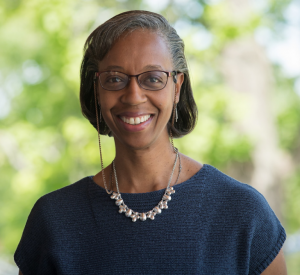 DR LESLEY-ANN L. DUPIGNY-GIROUX
DR LESLEY-ANN L. DUPIGNY-GIROUX
Professor, Department of Geography
University of Vermont, USA
FIELD OF RESEARCH: Climatology, Climate Change and Climate Literacy
FUNDER: National Science Foundation; American Association of University Women; NOAA PACE Postdoctoral Fellowships Program; U.S. Centers for Disease Control; National Climatic Data Center (now the National Centers for Environmental Information); Vermont Agency of Education; American Association for the Advancement of Science (AAAS) Women’s International Science Collaboration Program; University Of Vermont
LESLEY-ANN SHARES HER CAREER HIGHLIGHTS
DIVERSITY CLIMATE NETWORK
The Diversity Climate Network was a National Science Foundation award that ran from 2009-2013. Interestingly, at that time, we found that potential careers in climate science or geoscience didn’t really resonate with high school students. These days, that is no longer the case, since the impacts of our changing climate have become much more obvious and prevalent. The project really highlighted the importance of mentoring at all levels, especially peer-to-peer mentoring. It also taught students valuable networking skills, which are likely to continue to help them in their professional lives today.
The diversity aspect of the project has also become even more pertinent since the project ended. We are at a watershed moment for diversity, equity and inclusion. Increasingly, we are understanding the interdependence of climate literacy, access to knowledge, and social and environmental justice. Renewed interest in the project’s Facebook page suggests that these lessons from a decade ago are resonating with today’s conversation.
VERMONT STATE CLIMATOLOGIST
Reference
https://doi.org/10.33424/FUTURUM94
CLIMATE – the average conditions of the atmosphere, vegetation, water bodies and soils of an area, including but not limited to temperature and weather patterns
CLIMATE CHANGE – a sustained change in the average conditions of the climate of an area over a long period of time
CLIMATE LITERACY – an understanding of the elements of the climate system, how the climate is observed and modelled, humanity’s impacts on the climate, and of the impacts of climate change on human societies
CLIMATE MODELLING – using mathematical or computer-based methods to create models that simulate climate systems and predict trends
LAPSE RATE – the rate at which air temperature falls with increasing altitude
REMOTE SENSING – collecting data from a distance, such as by using satellites, balloons, drones or aircraft
SOCIAL CONSTRUCTIVISM – knowledge that is socially situated, by being connected to a familiar location or experience
SYSTEMS THINKING – recognising the role of interconnectedness and influence between entities
WEATHER – the state of the atmosphere at a particular place and time
Dr Lesley-Ann Dupigny-Giroux has an illustrious career with many titles to her name. As well as researching fields such as climatic natural hazards and remote sensing, not to mention working with key state decision-makers on climate action plans, she also devotes much of her time to building climate literacy. “Being climate literate is more critical than ever before,” she says. “If we do not understand weather, climate and climate change as intricate and interconnected systems, then our appreciation of the big picture is lost.”
Specifically, Lesley-Ann believes in the importance of understanding humanity’s influence on changing the climate. “Once we appreciate this concept fully, it can lead to positive behaviour change,” she says.
WHAT IS CLIMATE LITERACY ALL ABOUT?
“Systems thinking lies at the heart of climate literacy,” explains Lesley-Ann. She is referring to being able to visualise the climate system as an entity that is constantly being influenced by a huge array of different factors: forests, oceans, cloud cover, ice cover, and, of course, humanity’s impact, to name but a few. “Understanding all of this requires learning in a flexible and interdisciplinary way,” she says. “Critical thinking, reasoning and attention to detail are all important.”
“As a society, I believe we are becoming more climate literate,” says Lesley-Ann. “This is demonstrated through the various adaptation and mitigation action plans being rolled out at local, regional and national levels.”
The International Panel on Climate Change is generally considered the leading authority on climate modelling and predictions for the future, and Lesley-Ann says that its findings are increasingly being used in university classes and by decision-makers.
DOING IT FOR THE KIDS
Lesley-Ann works with people of all ages, including very young children. “When working with kindergarten kids, I often take the ‘edutainment’ approach,” she says. “I use fun activities to introduce scientific concepts. It’s also easier to engage them in weather-related issues because they can relate these to their daily lives.”
She recounts a memorable outreach event on ‘Things that Fly’ at a local science museum. “It was fascinating to watch my undergraduate students teach kindergarteners about concepts such as atmospheric turbulence (‘why planes go bumpity bump’) and albedo (‘why do you need sunglasses in a plane’) through acting it out with them.” She also remembers children’s excitement at launching a weather balloon: “Two four-year-olds were yelling, ‘Gimme more data’, conscientiously noting down every time the balloon transmitted data to the ground,” she says. “A 7-year-old present there was able to conclude, ‘As the balloon goes up, it gets colder’ – in other words, the textbook definition of a lapse rate.”
HOW TEACHERS CAN GET ON BOARD
To bring climate literacy into the classroom, Lesley-Ann recommends a ‘social constructivist’ approach. This refers to using information and situations that students are already familiar with through their everyday lives and building upon these to introduce the relevance and importance of climate science. “I suggest using local examples as far as possible, because it is easier to introduce and explore climate change impacts through observations that are closer to home,” she says.
She also recommends forming partnerships with other schools in different areas, even abroad, so that students can compare experiences of climate change and build their interpersonal skills simultaneously.
OUTREACH AT THE UNIVERSITY OF VERMONT
The University of Vermont has a range of committed outreach programmes. “As a land grant institution, the university is dedicated to providing outreach to people of the state,” explains Lesley-Ann. “This means many people at the university work closely with NGOs and governmental agencies, tackling challenges such as pollution in Lake Champlain or social relocation following Tropical Storm Irene in 2011.”
Additionally, high-impact practices are prioritised at the university as a cornerstone of undergraduate education. “We strive to help develop students’ critical thinking skills via experience,” says Lesley-Ann. “This includes internships in Vermont or further afield; opportunities to work in partnership with community organisations; and capstone projects that showcase students’ learning during the course of their degree.” Lesley-Ann gets directly involved in these high-impact practices. “I am currently teaching a first-year class using the lens of remote sensing and human vulnerabilities to lead students through the transition from high school to university,” she says.
This title relates to my work in five main areas: communications, information services, research, education, and monitoring and impact assessment. This means that I provide climate data, along with expert opinions and recommendations, to Vermont citizens and beyond. I also work closely with Vermont State agencies on topics such as groundwater resilience and planning for climate change. I am also called upon to work with regional decision-makers and am often interviewed by the media.
LEAD EDITOR OF ‘HISTORICAL CLIMATE VARIABILITY AND IMPACTS IN NORTH AMERICA’
This work was the first of its kind in the US to piece together climate variations over the last 200-300 years in order to set modern-day climate change into a longer-term context. A lot of the research can be gleaned from meticulously combing through historical documents, such as archive books, maps, newspapers and even old diaries. I hope this book will continue to highlight the importance of such interdisciplinary skills to broaden our knowledge about the past, present and future.
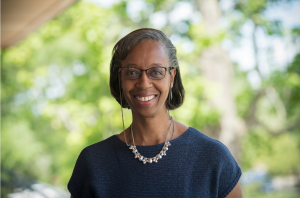 DR LESLEY-ANN L. DUPIGNY-GIROUX
DR LESLEY-ANN L. DUPIGNY-GIROUX
Professor, Department of Geography
University of Vermont, USA
FIELD OF RESEARCH: Climatology, Climate Change and Climate Literacy
FUNDER: National Science Foundation; American Association of University Women; NOAA PACE Postdoctoral Fellowships Program; U.S. Centers for Disease Control; National Climatic Data Center (now the National Centers for Environmental Information); Vermont Agency of Education; American Association for the Advancement of Science (AAAS) Women’s International Science Collaboration Program; University Of Vermont
LESLEY-ANN SHARES HER CAREER HIGHLIGHTS
DIVERSITY CLIMATE NETWORK
The Diversity Climate Network was a National Science Foundation award that ran from 2009-2013. Interestingly, at that time, we found that potential careers in climate science or geoscience didn’t really resonate with high school students. These days, that is no longer the case, since the impacts of our changing climate have become much more obvious and prevalent. The project really highlighted the importance of mentoring at all levels, especially peer-to-peer mentoring. It also taught students valuable networking skills, which are likely to continue to help them in their professional lives today.
The diversity aspect of the project has also become even more pertinent since the project ended. We are at a watershed moment for diversity, equity and inclusion. Increasingly, we are understanding the interdependence of climate literacy, access to knowledge, and social and environmental justice. Renewed interest in the project’s Facebook page suggests that these lessons from a decade ago are resonating with today’s conversation.
VERMONT STATE CLIMATOLOGIST
This title relates to my work in five main areas: communications, information services, research, education, and monitoring and impact assessment. This means that I provide climate data, along with expert opinions and recommendations, to Vermont citizens and beyond. I also work closely with Vermont State agencies on topics such as groundwater resilience and planning for climate change. I am also called upon to work with regional decision-makers and am often interviewed by the media.
LEAD EDITOR OF ‘HISTORICAL CLIMATE VARIABILITY AND IMPACTS IN NORTH AMERICA’
This work was the first of its kind in the US to piece together climate variations over the last 200-300 years in order to set modern-day climate change into a longer-term context. A lot of the research can be gleaned from meticulously combing through historical documents, such as archive books, maps, newspapers and even old diaries. I hope this book will continue to highlight the importance of such interdisciplinary skills to broaden our knowledge about the past, present and future.
HOW DID LESLEY-ANN BECOME A CLIMATOLOGIST?
WHAT WERE YOUR INTERESTS AS A CHILD?
I was an avid reader, and the Nancy Drew mysteries were a firm favourite. Perhaps this provided the seed that germinated into my lifelong interest in looking for patterns and exploring the ‘why’ behind places and events – in other words, the study of geography! My other passion is photography, and upon reflection I believe this fed my love for using satellite and aerial images to figure out processes and patterns at the landscape scale.
WHO INSPIRED YOUR CAREER?
My love of all things geography came from my Dad. He was a master at finding the quickest routes between places, decades before Google Maps was around! This made a lasting impression on my search of interconnections across the landscape. Professionally, I have been most inspired by my two mentors. Dr Warren M. Washington is a world renowned climate scientist, who was the inspiration behind the Diversity Climate Network, which helps open doors for students from diverse backgrounds. Mr Harry Van Loon, who is famous for his work on the North Atlantic Oscillation, taught me the art and science of communicating across multiple languages, platforms and perspectives.
HAVE YOU EVER HAD ANY EUREKA MOMENTS?
More often it’s a gradual process of realisation. For instance, having supportive and empathetic mentors who I can look up to has been invaluable for my personal growth. You always need someone in your corner to support you, while also challenging you to be the best you can be.
Similarly, working with a multitude of teachers and students across many grade levels and school environments has made me a better teacher, principally through fine-tuning my ability to co-create information rather than merely impart it.
WHAT HAS BEEN THE ROLE OF COLLABORATION IN YOUR CAREER?
Because my work concerns many different disciplines, I have always endeavoured to push the boundaries of my research. This had led me to collaborate with educators to advance climate literacy; universities across the US on diversity in climate science; forestry professionals to investigate climate change’s impact on Vermont’s iconic sugar maples; and the National Weather Service to address urban flooding. Most importantly, I have worked with many cohorts of students on topics ranging from remote sensing of ice storm damage, to roads and conservation.
HOW DO YOU OVERCOME OBSTACLES?
To deal with challenges such as negative reviews, for instance, I find it is helpful to walk away, divert my energy elsewhere for a while and then return with a fresh perspective. Then, I can work through the critiques and use them to grow and improve as a researcher, scientist or teacher.
WHAT KEEPS YOU MOTIVATED?
My greatest motivation comes from interactions with students and lifelong learners. I find the greatest reward is seeing that ‘lightbulb moment’, when a student grasps a concept and is able to explain it excitedly to another student – or even to future colleagues, years later.
• Climatology is a moderately rare subject to study exclusively at the undergraduate level and is traditionally found in geography departments. Atmospheric science, meteorology or geography are all closely related courses. Other subjects such as mathematics, physical sciences, agriculture, public health and computer science can also lead to a career in climatology.
• Lesley-Ann studied geography at university. According to the QS World University Rankings, the best universities for geography are Oxford, LSE (London), Cambridge, the University of California Berkeley, and the University of California Los Angeles.
• According to Salary Expert, the average climatologist salary in the USA is $99k per year.
PATHWAY FROM SCHOOL TO CLIMATOLOGIST
Lesley-Ann recommends taking subjects such as geography, environmental sciences, mathematics, physics, chemistry and geospatial technologies. She highlights the importance of a broad education to understand the interconnectedness of the world around you.
LESLEY-ANN’S TOP TIPS FOR STUDENTS
01 – Always think outside the box. Don’t be afraid to try something that has never
been attempted before. That’s how we find solutions to age-old problems.
02 – Seek out a good mentor, someone who can support you and with whom you can have honest and life-changing conversations.
03 – Never stop asking ‘why’, and always look for patterns. That’s how you can discover the core of an issue, or the hidden pieces of the puzzle that nobody else has noticed.
Write it in the comments box below and Lesley-Ann will get back to you. (Remember, researchers are very busy people, so you may have to wait a few days.)



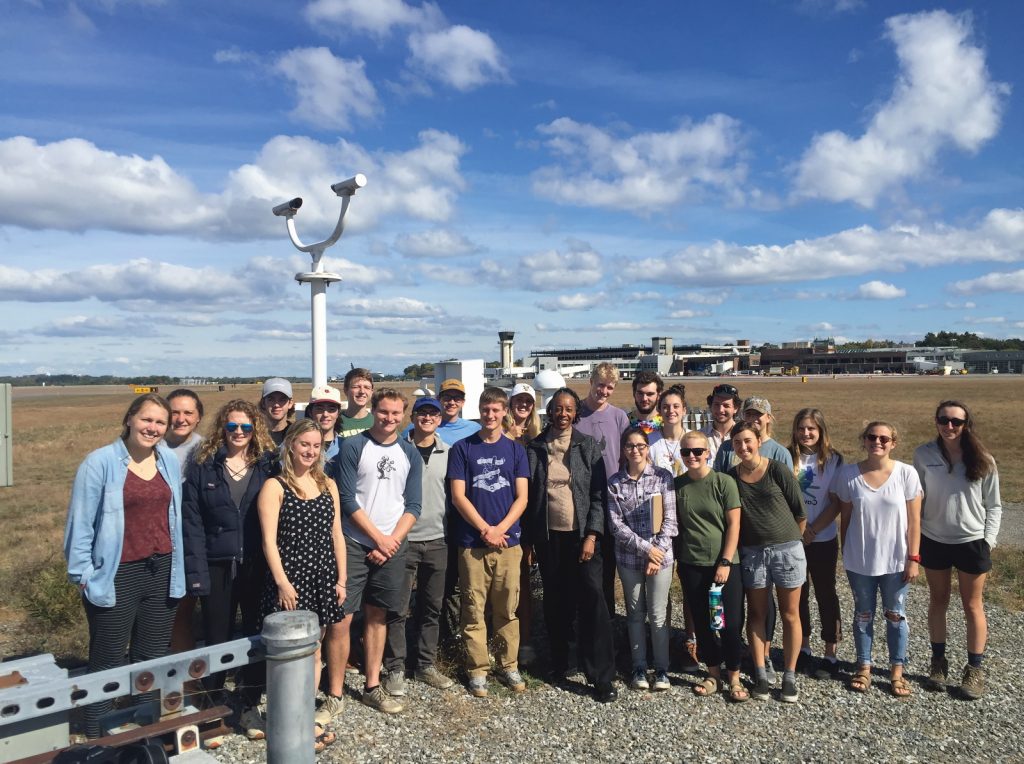
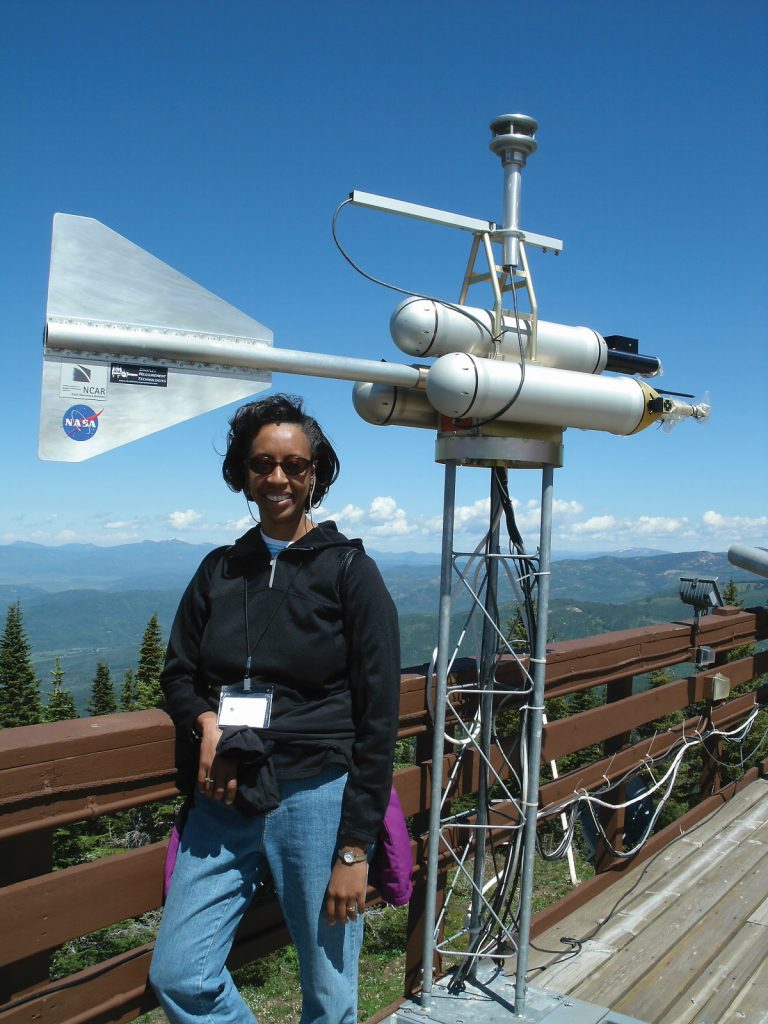
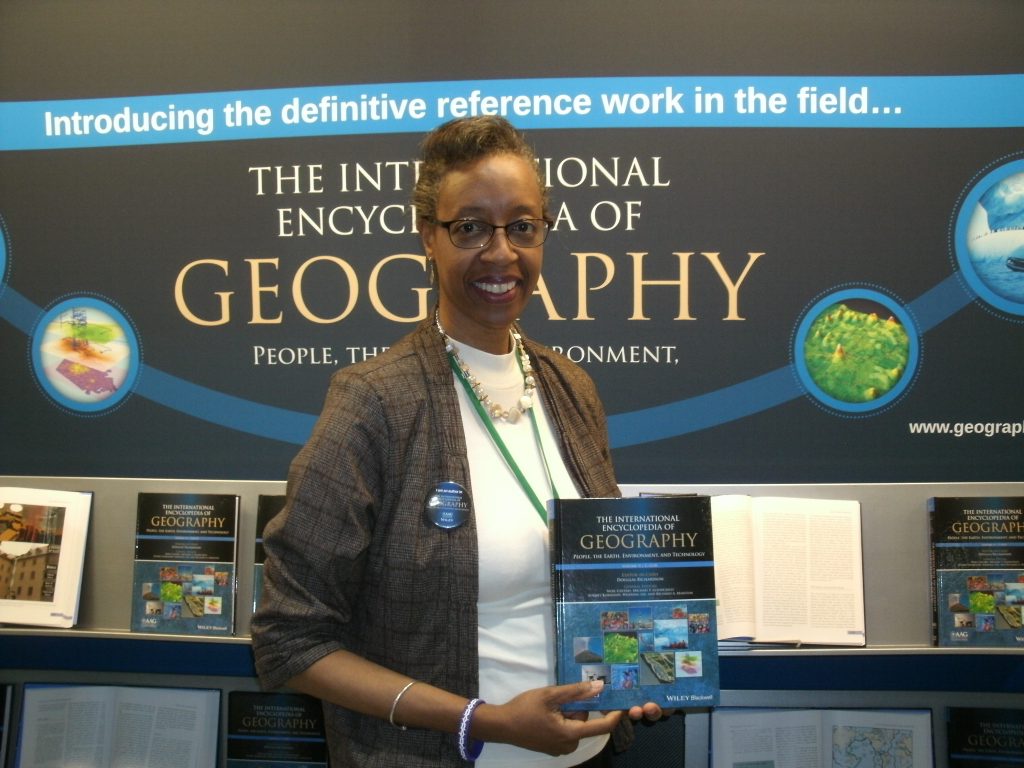


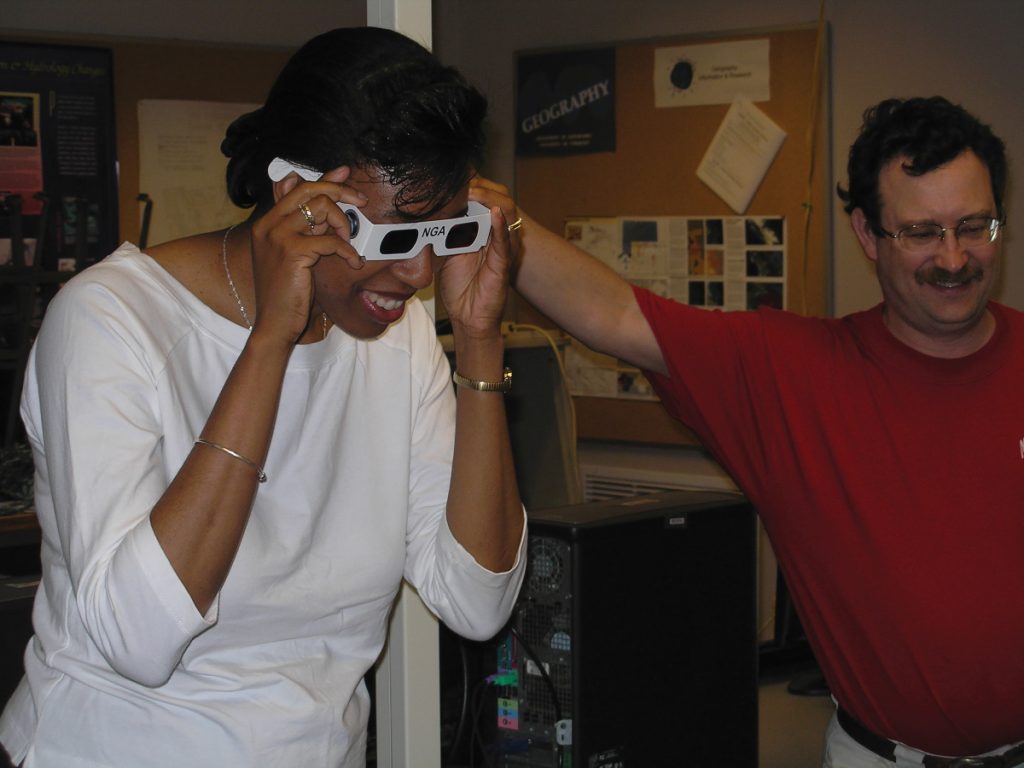

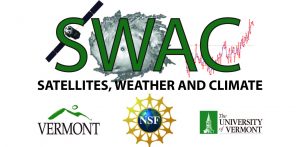
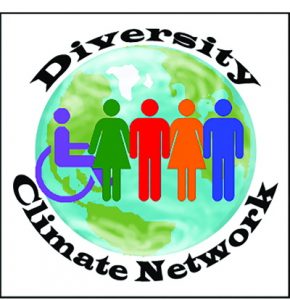

At what stage in your education did you make the acquaintance of Climatology? AND decide to take it up as your career ?
Hello Mary
Thanks for your question. I would say that I became acquainted with Climatology in high school where I did Geography for my GCE Cambridge Ordinary Levels (O-levels). I chose it as a career at the undergraduate stage, when I found out how much I loved looking at the connections between the land and atmosphere.
Be well!